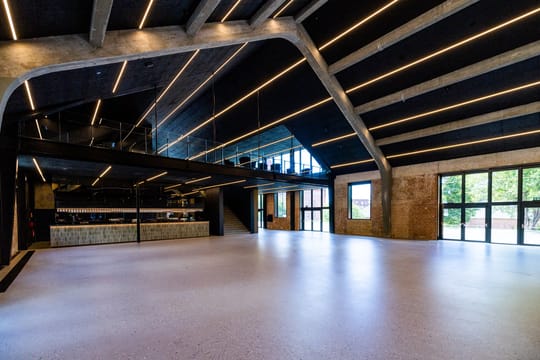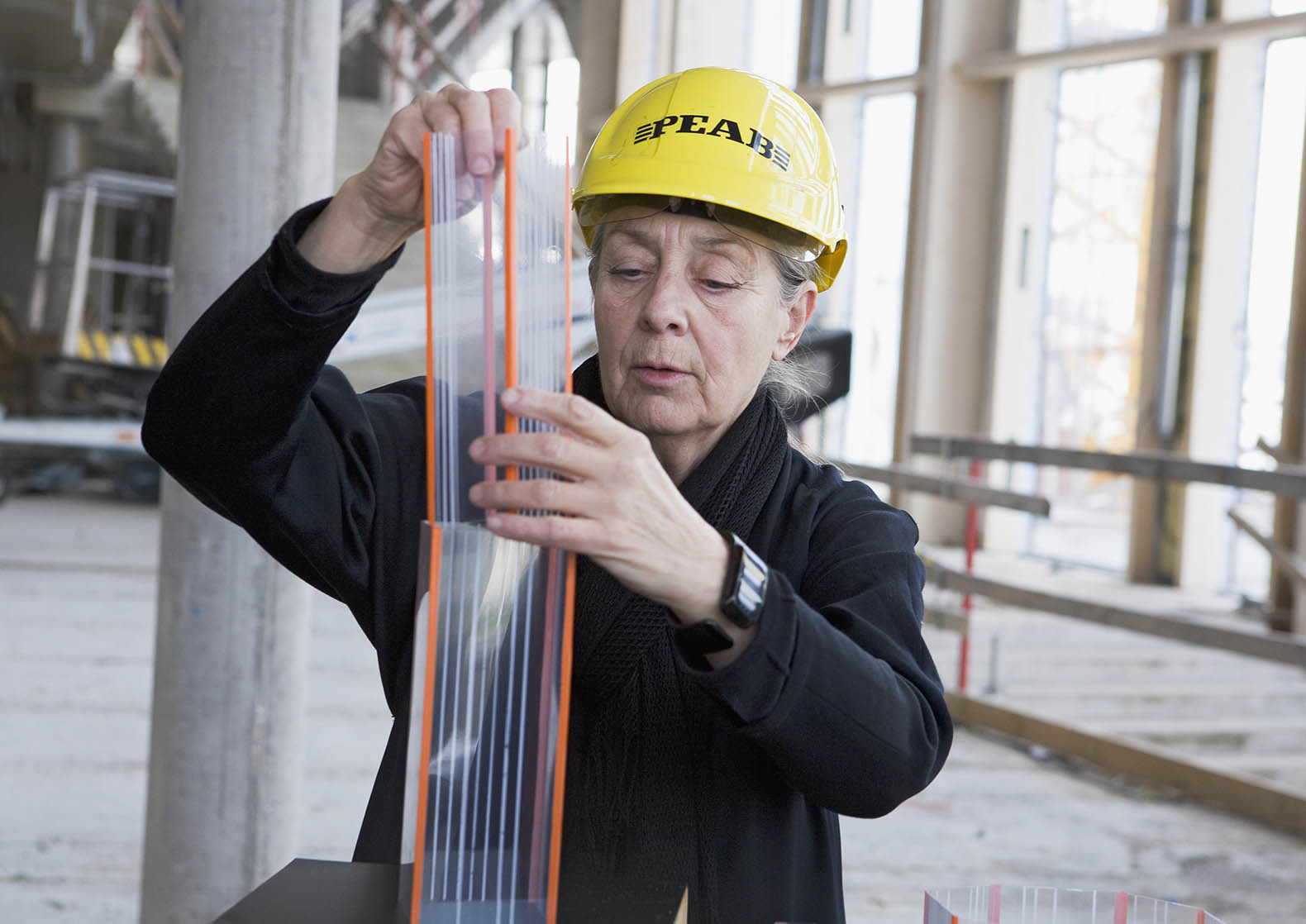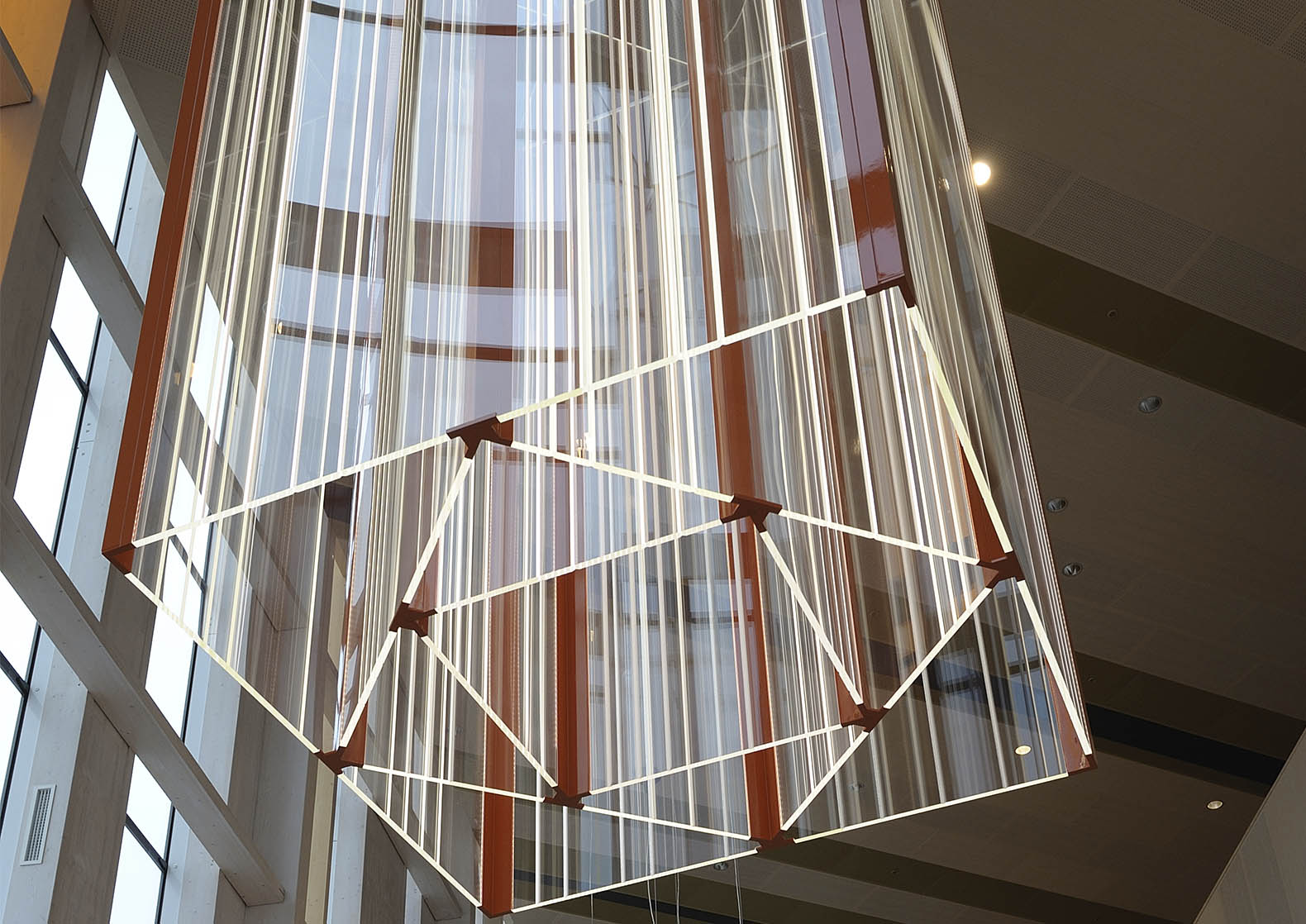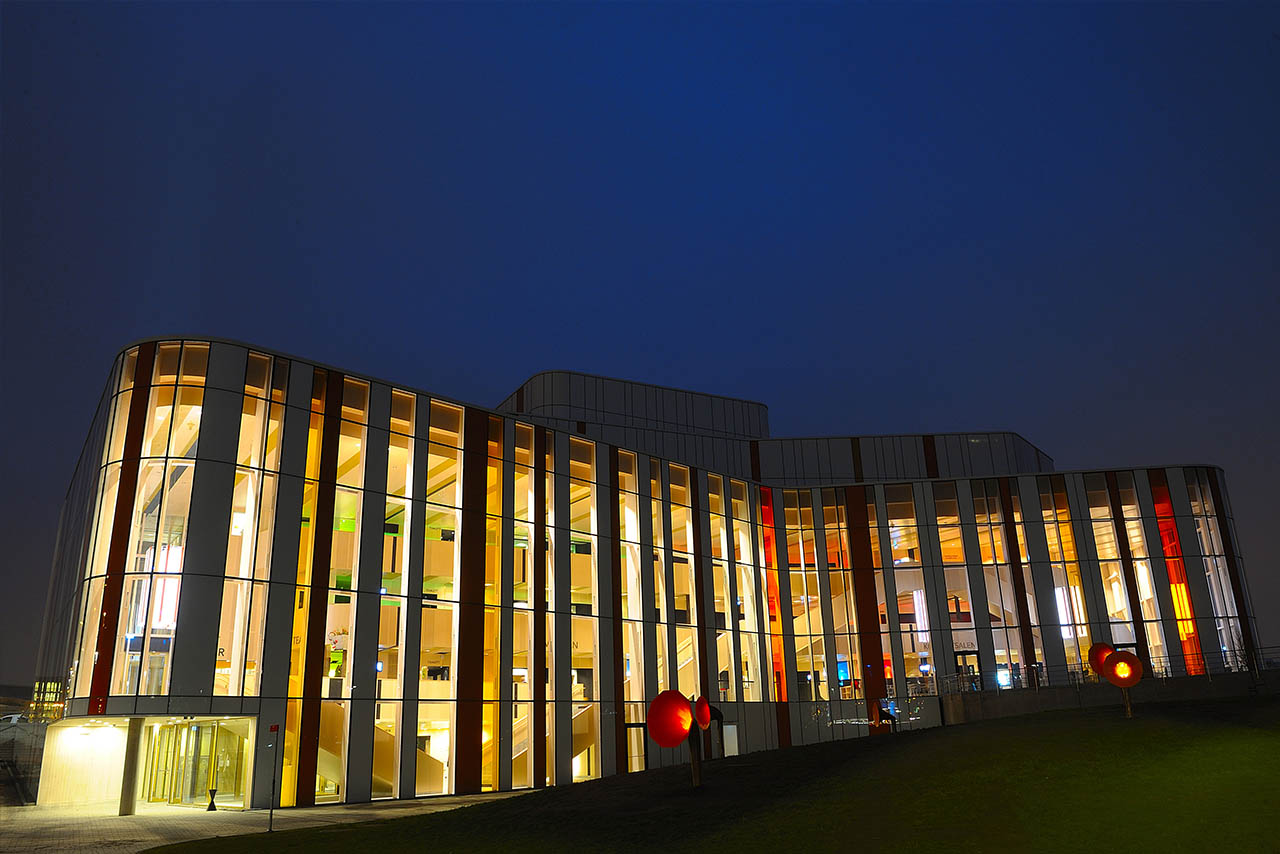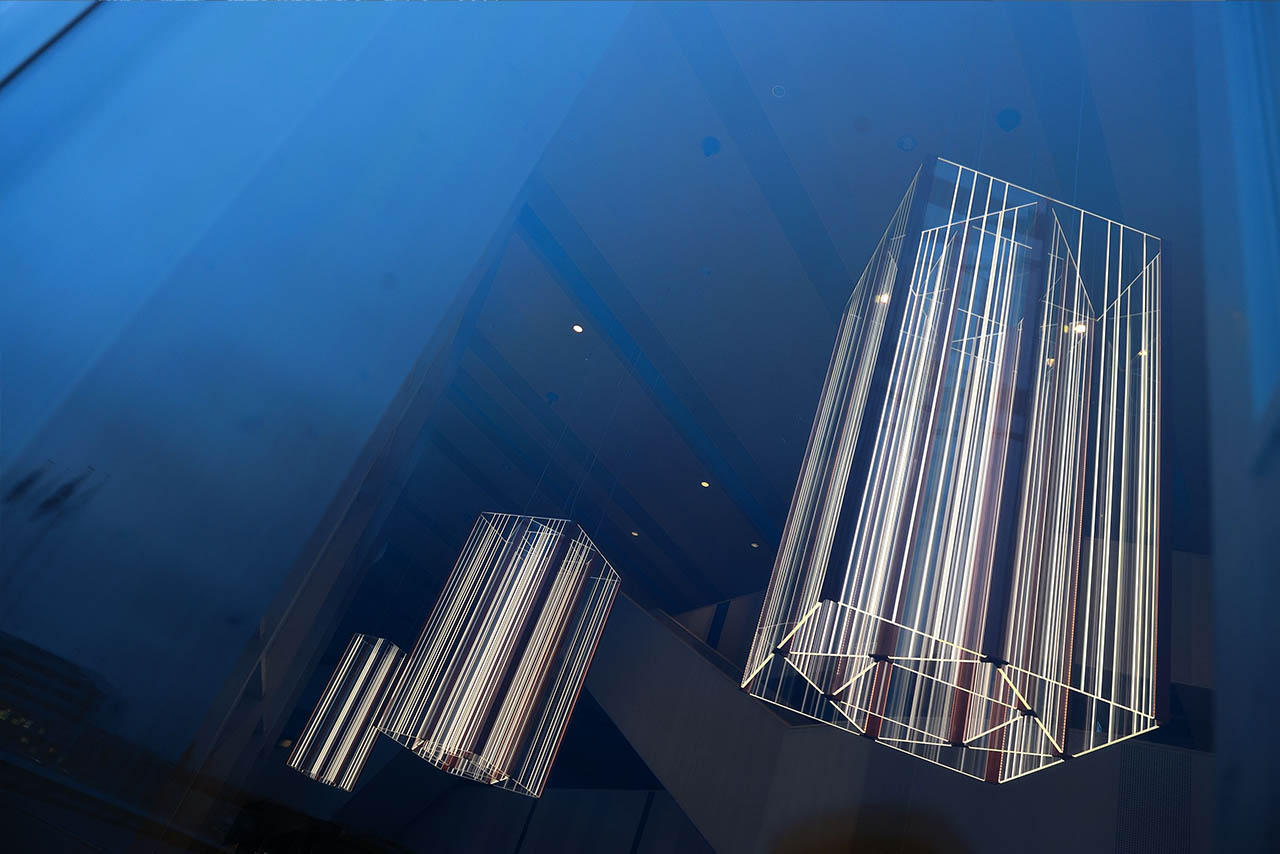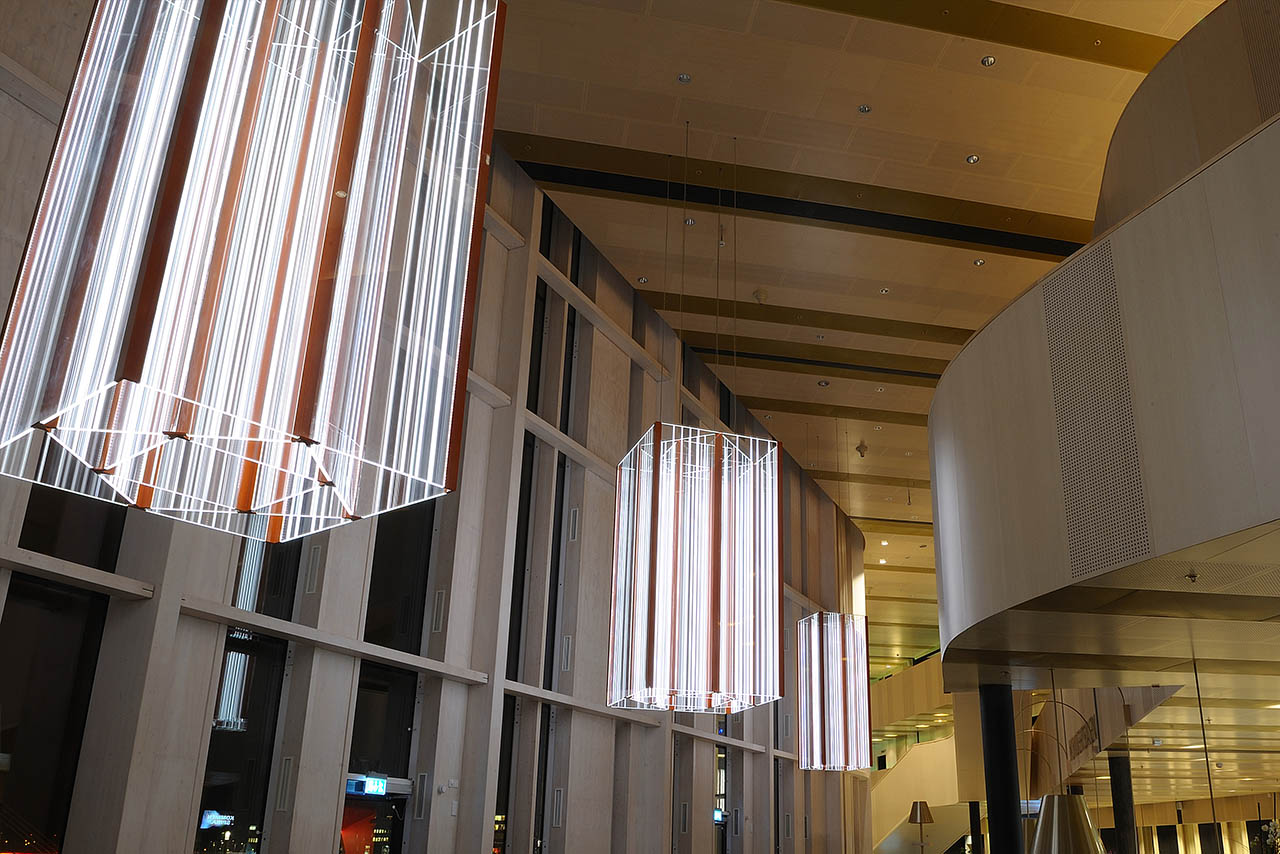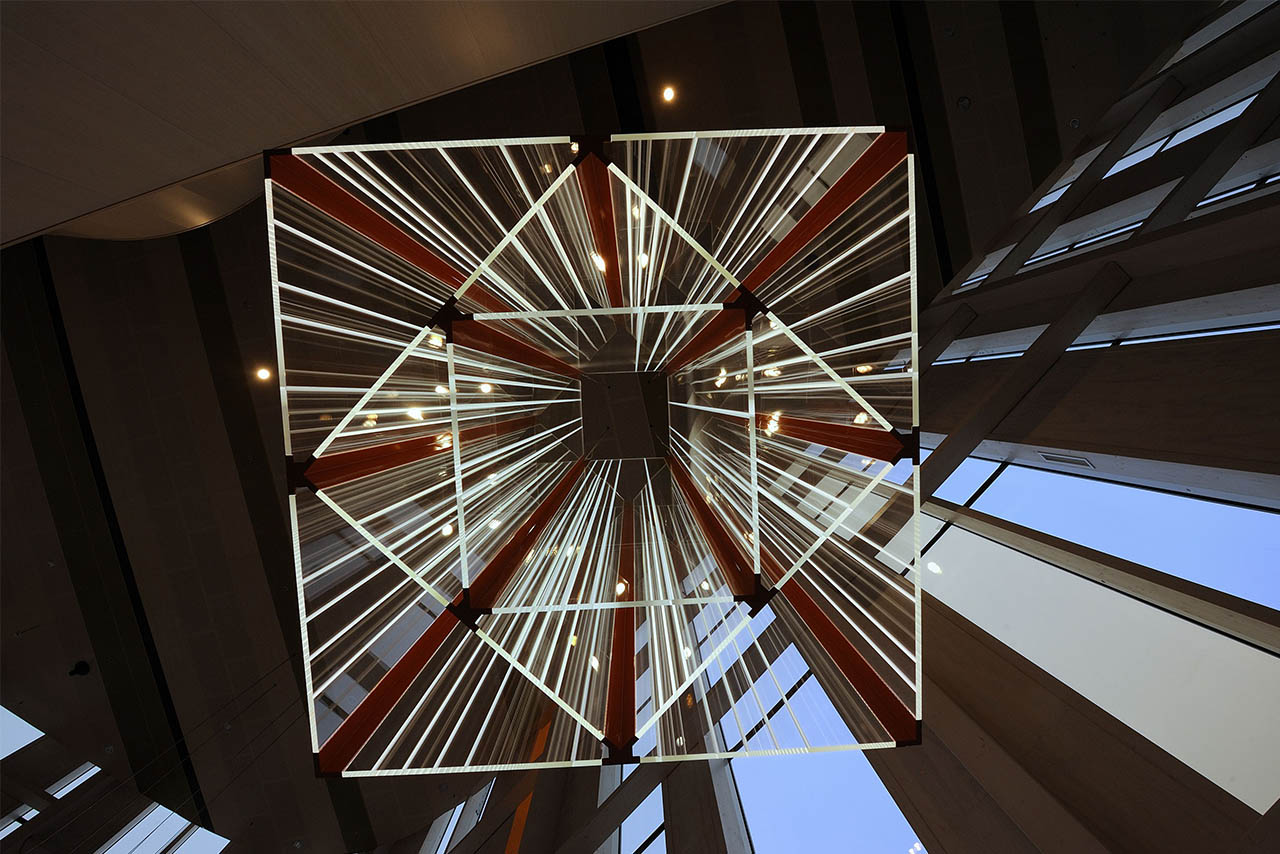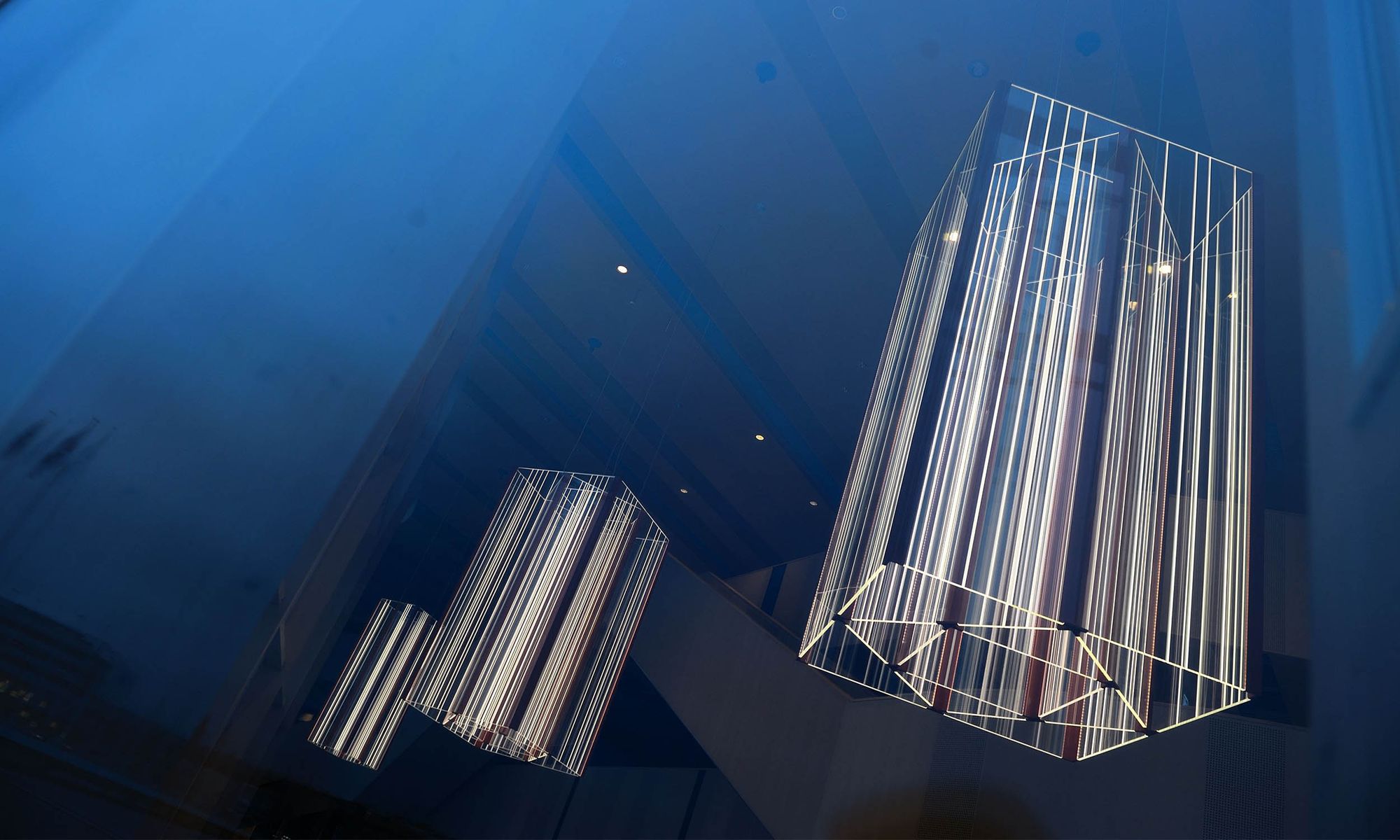
Catching fire - the "Spira Lamp”
The "Spira Lamp” is a piece of art. It is the vision of designer and artist Ingegerd Råman, realised by Fagerhult in collaboration with skilled partners and subcontractors.
It's like a gigantic votive reflecting in the cold waters of a Nordic lake. The culture and concert hall Spira in Jönköping is all glass and light – crisp and bright during the day with a warm glow at night. Created by Gert Wingårdh, one of Sweden’s best known and successful architects, in collaboration with Jonas Edblad, Spira took its inspiration from the local heritage.
The long tradition of glassmaking is evident throughout, while the orange tinted glass panels pay tribute to Jönköping being the home of the Swedish match. This 15,000 square meter centre of culture has four stages and can host up to 1,700 visitors. From theatre and dance to classical music and jazz, Spira collates a wide repertoire of performing arts throughout the region.
"When Gert Wingårdh asked me to get involved I was honoured, exited – and a bit scared”, admits Ingegerd Råman. ”Although glass is my element, I’d never worked with artificial light and luminaires before. Not in this way. The real challenge was the difference in scale. It’s so big. I’m used to work with millimetres, but this time the proportions were quite different”, she explains.
As the queen of Swedish crystal,famous for her collaborations with leading crystal brands, she knows her material. In 1995 she was granted a professor’s title by the Swedish govern-ment, in praise of her unadorned and functional design that always has a silver lining. She has collaborated with Wingårdh before, in a project for the Swedish Embassy in Washington and knows the drill.
"Gert had given me free reign, only saying that he wanted luminaires instead of traditional art work. I was very clear in my vision; I wanted the luminaire to be a piece of art in speaking with architecture.”
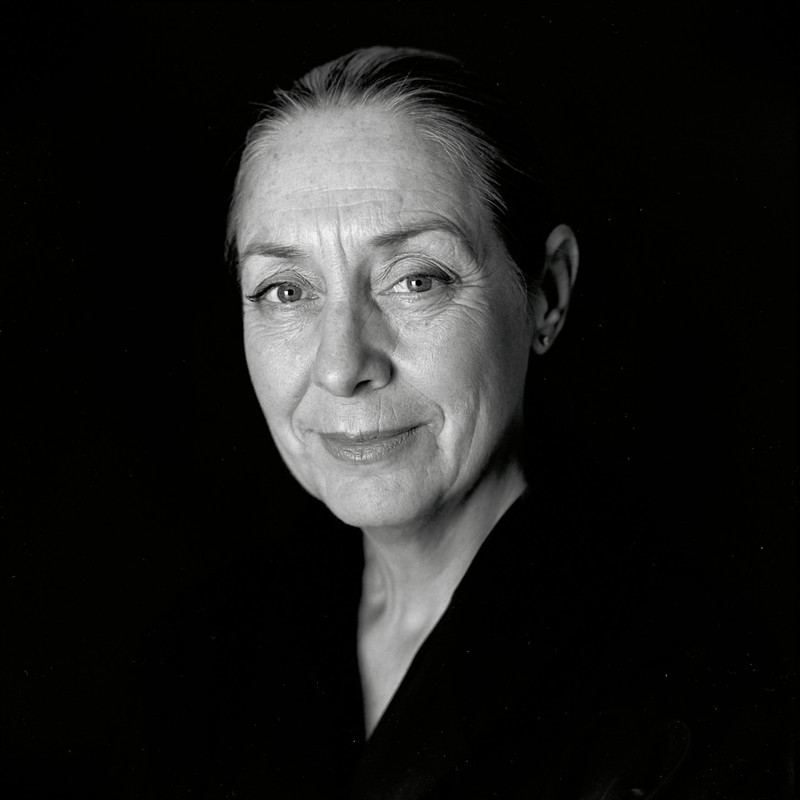 "Spira is a building with a strong expression – the trick was to find my own formulation without opposing the house." Ingegerd Råman
"Spira is a building with a strong expression – the trick was to find my own formulation without opposing the house." Ingegerd Råman
At an early stage, Ingegerd was introduced to Istvan Magyarovari, Engineering Designer at Fagerhult. Inspired by the new LED-technology he presented an innovative material solution. "Glass is extremely heavy and hard to handle in those kind of large scale installations. By using acrylic sheets with milled grooves, we could combine excellent light performance with the artistic expression”, says Istvan Magya-rovari. The LED-modules, hidden in – and by – Ingegerds design, distributes the light through the grooves in a way that reminds of cut glass.
"The hard part was to achieve the simplicity of the light lines. With this solution the light blends naturally with the fittings. With the LEDs hidden in the construction it is possible to look directly into the light without being blinded”, Istvan concludes.
Ingegerd Råman is delighted with the result and how the four luminaires have developed, creating streaks of light, moving as you walk through the room. When realising a project like this – balancing on the edge of new technology, exploring new materials and designs – collaboration is crucial. For Ingegerdand Istvan, who both are used to work with industrial serial production, the Spira luminaire was a true challenge. When combining their skills and expe-rience they stretched the boundaries of what’s possible. Although aesthetics was the main object, practicalities such as safe installation and operation couldn’t be overseen.
 "It’s almost like magic. When standing under the luminaire you have a child’s perspective – looking right into the luminaire. But there’s nothing there but stripes and light." Ingegerd Råman
"It’s almost like magic. When standing under the luminaire you have a child’s perspective – looking right into the luminaire. But there’s nothing there but stripes and light." Ingegerd Råman
Together with involved partners and subcontractors every detail was formed to perfection. "I’m known to be quite stubborn”, Ingegerd laughs. "I wont take ‘can’t be done’ for an answer. It’s the designer’s objective to make the participants in a project go that extra mile. Of course, you have to be responsive and humble to other professionals – and you have to know the limits – but in a project like this, old truths should be challenged.”
In this case, Fagerhult actually formulated a new, innovative lighting technology. The principle of beaming LED-light into a reflector sheet, creating big, even surfaces of light, has been applied to the award winning Appareo-pendant. "To succeed with this kind of project – and now I’m talking both about the Spira luminaire and about the actual building – you need to have a foresighted project owner. A person with visions and the guts to stand up for it. This person existed in the Spira project in form of property manager Erik Pålsson”, explains Ingegerd Råman. "It’s people who dare, who make the difference.”
TEKST AMELIE BERGMAN
FOTO MATS ANDERSSON - JOHAN WERNER AVBY - MARIE PETERSON
Relaterede nyheder
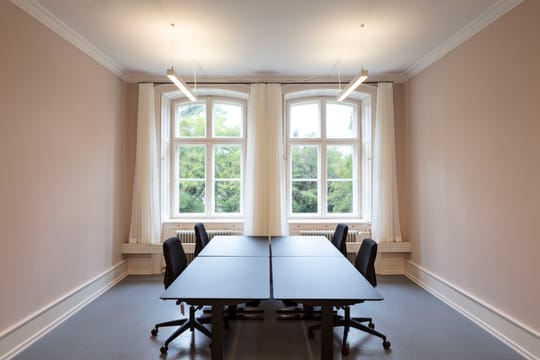
Østervold Observatorium - Historisk bygning med nutidig intelligens og stemningsfuld belysning
Historisk bygning møder nutidig intelligens – og stemningsfuld belysningHos Fagerhult skaber vi lysløsninger, der understøtter både arkitektur, funktion og atmosfære. Et af vores mest æstetisk interessante projekter er leveringen af belysning til det fredede Østervold Observatorium i Botanisk Have, som nu danner ramme om fremtidens forskning i kunstig intelligens ved AI Pionercenteret under Københavns Universitet. Et moderne forskningsmiljø i historiske rammer Østervold Observatorium blev opført i 1861 som Københavns Universitets nye stjernekiggeri. I dag – efter en nænsom restaurering – står den fredede bygning igen fuld af karakter og farve. Nu er den klar til at huse banebrydende forskning i kunstig intelligens. Restaureringen er udført med stor respekt for bygningens historie. De oprindelige farver – hele 11 nuancer fra mørk oxydrød til lys rosa og musegrå – har dannet grundlag for en ny, nutidig farvesætning. Ni moderne farver er udvalgt og afstemt, så både fortiden og fremtidens funktionalitet får plads. I sidefløjene er farverne fortolket frit i et harmonisk forløb, der skaber ro og sammenhæng mellem rummene. Østervold Observatorium 2 Lys, der respekterer arkitekturen Den gamle stjernekikkert fra 1895 står stadig i bygningens kuppel, og den ikoniske trappe snor sig op gennem huset – nu oplyst med respekt for både arkitektur og farvesætning. Den dybe og varme farvepalet understreges af belysningen og tilfører bygningen en særlig identitet og atmosfære. Projektet har stillet høje krav til balancen mellem arkitektonisk bevaring og moderne behov. Derfor er der valgt belysningsløsninger, som både fremhæver bygningens detaljer og lever op til nutidens krav til funktionalitet, komfort og energieffektivitet. Østervold Observatorium 3 Farver, overflader og lys i samspil Det nye interiørs farvesætning spiller en central rolle – og i tæt samspil med belysningen. Farvetemperatur og armaturplacering er nøje tilpasset rummenes vægge og overflader for at fremhæve materialitet og skabe en behagelig stemning. Intelligente løsninger – usynligt integreret Lysstyringen varetages af Fagerhults intelligente system Organic Response, som automatisk tilpasser sig dagslys og tilstedeværelse. Det skaber et dynamisk, naturligt lysmiljø, der samtidig reducerer både energiforbrug og CO₂-aftryk. Valgte armaturer På trappen er armaturet Zoft anvendt – en diskret og tidløs løsning med opal, mat glaskuppel, der spreder lyset jævnt og blændfrit. Dets afdæmpede design lader arkitekturen træde i forgrunden. I kontor- og fællesarealer er anvendt Notor, vores klassiske, nedpendlede armatur, der forener høj effektivitet med optimal visuel komfort. Den elegante formgivning gør, at Notor indgår naturligt i det moderniserede, men stadig stemningsfulde interiør.